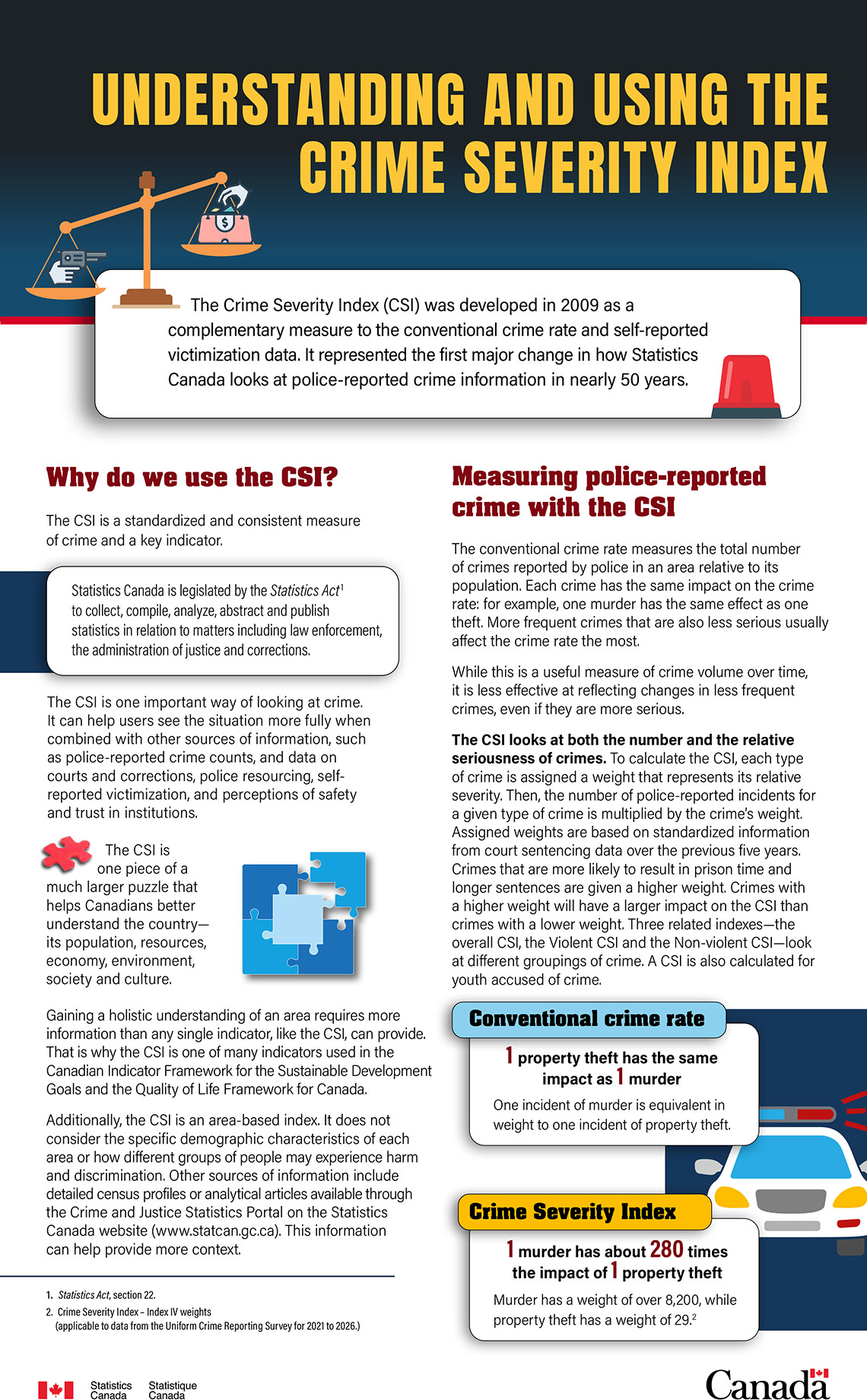
Description - Infosheet: Understanding and using the Crime Severity Index
Understanding and using the Crime Severity Index
The Crime Severity Index (CSI) was developed in 2009 as a complementary measure to the conventional crime rate and self-reported victimization data. It represented the first major change in how Statistics Canada looks at police-reported crime information in nearly 50 years.
Why do we use the CSI?
The CSI is a standardized and consistent measure of crime and a key indicator.
The CSI is one important way of looking at crime. It can help users see the situation more fully when combined with other sources of information, such as police-reported crime counts and data on courts and corrections, police resourcing, self-reported victimization, and perceptions of safety and trust in institutions.
The CSI is one piece of a much larger puzzle that helps Canadians better understand the country—its population, resources, economy, environment, society and culture.
Gaining a holistic understanding of an area requires more information than any single indicator, like the CSI, can provide. That is why the CSI is one of many indicators used in the Canadian Indicator Framework for the Sustainable Development Goals and the Quality of Life Framework for Canada.
Additionally, the CSI is an area-based index. It does not consider the specific demographic characteristics of each area or how different groups of people may experience harm and discrimination. Other sources of information include detailed census profiles or analytical articles available through the Crime and Justice Statistics Portal on the Statistics Canada website (www.statcan.gc.ca). This information can help provide more context.
Measuring police-reported crime with the CSI
The conventional crime rate measures the total number of crimes reported by police in an area relative to its population. Each crime has the same impact on the crime rate: for example, one murder has the same effect as one theft. More frequent crimes that are also less serious usually affect the crime rate the most.
While this is a useful measure of crime volume over time, it is less effective at reflecting changes in less frequent crimes, even if they are more serious.
The CSI looks at both the number and the relative seriousness of crimes. To calculate the CSI, each type of crime is assigned a weight that represents its relative severity. Then, the number of police-reported incidents for a given type of crime is multiplied by the crime's weight. Assigned weights area based on standardized information from court sentencing data over the previous five years.
Crimes that are more likely to result in prison time and longer sentences are given a higher weight. Crimes with a higher weight will have a larger impact on the CSI than crimes with a lower weight. Three related indexes—the overall CSI, the Violent CSI and the Non-violent CSI—look at different groupings of crime. A CSI is also calculated for youth accused of crime.
Conventional crime rate
1 property theft has the same impact as 1 murder.
One incident of murder is equivalent in weight to one incident of property theft.
Crime Severity Index
1 murder has about 280 times the impact of 1 property theft.
Murder has a weight of over 8,200, while property theft has a weight of 29.Footnote 2